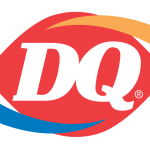
Sloppy Joe: America’s Quintessential Loose Meat Sandwich
The sloppy joe began making its appearance in food columns, advertisements, and cookbooks in the early 1940s.

The sloppy joe began making its appearance in food columns, advertisements, and cookbooks in the early 1940s.

This homemade sloppy joe recipe is quick, easy, and inexpensive.

Dairy Queen got its start in 1938 in an ice cream store in Kankakee, Illinois owned by Sherb Noble.